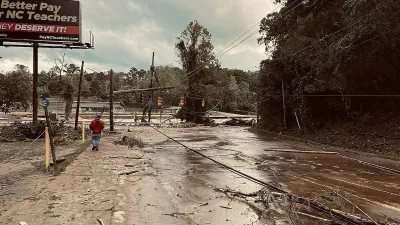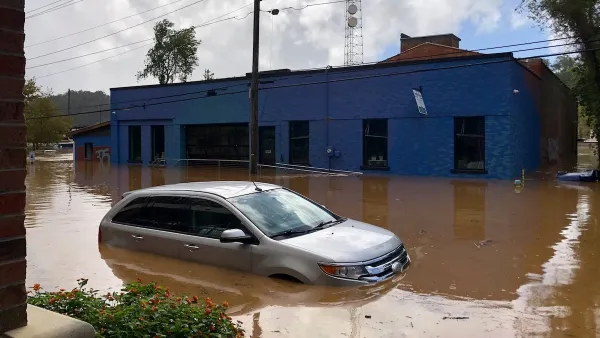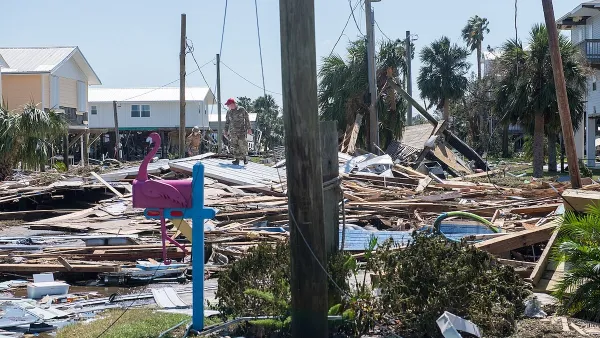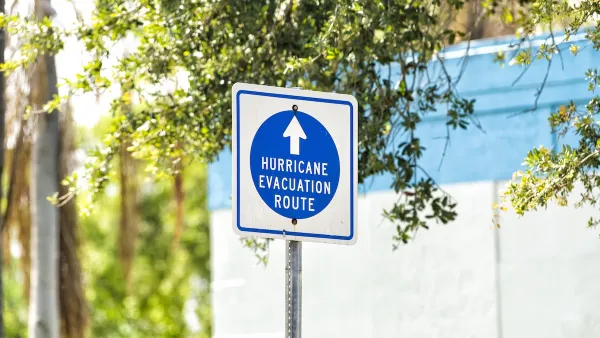Parts of North Carolina previously considered immune to the impact of hurricanes experienced historic flooding in the aftermath of the storm.

Even so-called “climate havens’ like Asheville, North Carolina are feeling the devastating impacts of Hurricane Helene, indicating that no region is safe from increasingly dangerous hurricanes and other climate-fueled disasters, write Chelsea Harvey and Thomas Frank in Scientific American.
Communities across Florida, Georgia, South Carolina, North Carolina, Tennessee and surrounding states were inundated by catastrophic floods. Millions of people lost power. And property damages are expected to amount to tens of billions of dollars.
Helene could, at the end of the day, be one of the most expensive weather disasters in U.S. history, with damages projected to be as much as $110 billion and over 60 deaths reported so far. Towns in the western part of the state previously considered isolated from hurricane damage received over 10 inches of rain, with some areas receiving as much as 30 inches.
Meanwhile, many of the homeowners in the region don’t have flood insurance, which is sold separately and often comes at a high cost. “Just 0.8 percent of the nearly 700,000 households in heavily flooded North Carolina counties have flood insurance through FEMA, agency records show.” Even in Florida, just 25 percent of households in flood risk areas have a policy.
FULL STORY: Hurricane Helene’s Devastation Shows No Region Is Safe from Climate-Fueled Disaster

National Parks Layoffs Will Cause Communities to Lose Billions
Thousands of essential park workers were laid off this week, just before the busy spring break season.

Retro-silient?: America’s First “Eco-burb,” The Woodlands Turns 50
A master-planned community north of Houston offers lessons on green infrastructure and resilient design, but falls short of its founder’s lofty affordability and walkability goals.

Delivering for America Plan Will Downgrade Mail Service in at Least 49.5 Percent of Zip Codes
Republican and Democrat lawmakers criticize the plan for its disproportionate negative impact on rural communities.

Test News Post 1
This is a summary

Test News Headline 46
Test for the image on the front page.

Balancing Bombs and Butterflies: How the National Guard Protects a Rare Species
The National Guard at Fort Indiantown Gap uses GIS technology and land management strategies to balance military training with conservation efforts, ensuring the survival of the rare eastern regal fritillary butterfly.
Urban Design for Planners 1: Software Tools
This six-course series explores essential urban design concepts using open source software and equips planners with the tools they need to participate fully in the urban design process.
Planning for Universal Design
Learn the tools for implementing Universal Design in planning regulations.
EMC Planning Group, Inc.
Planetizen
Planetizen
Mpact (formerly Rail~Volution)
Great Falls Development Authority, Inc.
HUDs Office of Policy Development and Research
NYU Wagner Graduate School of Public Service





























